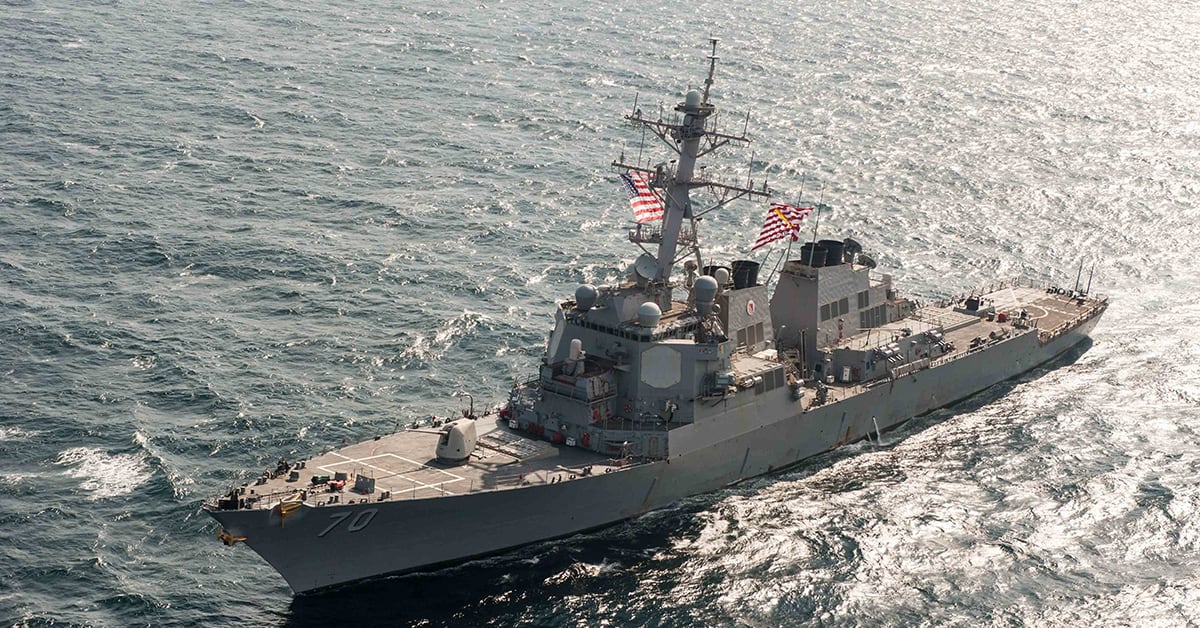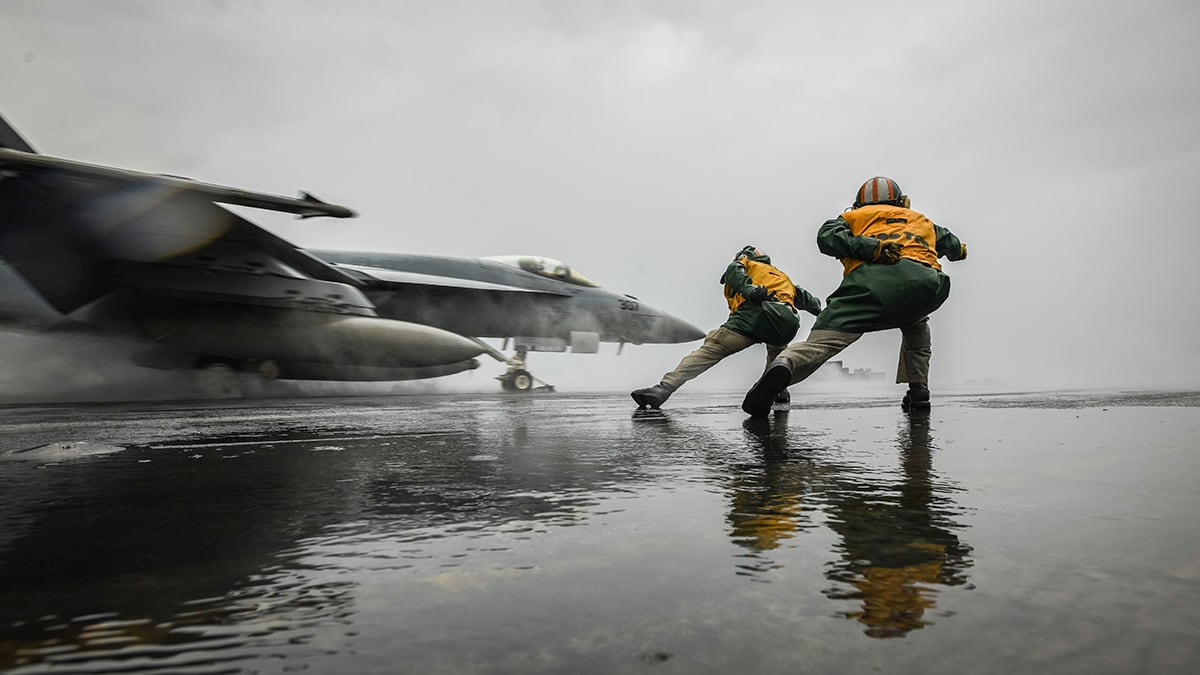WASHINGTON — Congress finalized a $1.3 trillion budget deal early Friday morning to stave off another government shutdown threat this weekend and give federal agencies — including the Department of Defense — their full-year spending allotment after nearly a six-month wait.
The massive omnibus spending plan passed by a 65-32 margin just after midnight, about 12 hours after it was approved by the House and less than 24 hours before another partial government shutdown would have begun without the new appropriations.
It contains $700 billion for defense spending for fiscal 2018, plus another $10.1 billion for military construction projects and $185.4 billion for the Department of Veterans Affairs. Each is a substantial increase over fiscal 2017 spending, and above what mandatory budget caps would have allowed before lawmakers reached a new budget deal in February.
Conservatives touted the measure as the largest defense spending increase in 15 years, and a much needed boost to help rebuilt military readiness and modernization accounts.
“For too long, Washington has asked our troops to do more with less, sending them into harm’s way without the training and equipment they need to defend themselves and the country,” House Armed Services Committee Chairman Mac Thornberry said after his chamber’s vote. “President Trump is right to insist on rebuilding our military, and this bill begins to do just that.”
The defense spending portion of the bill includes $589.5 billion in the base military budget and another $65.2 billion for overseas contingency operations.
It features a 2.4 percent pay raise for troops (which began in January), a 21 percent increase in both defense research and development (to $89.2 billion) and procurement (to $144.3 billion), and $238 billion for military operations and maintenance, almost $1 billion more than what the White House had requested.
The bill also provides limited funding flexibility for Pentagon budget planners to spend the sudden infusion of funding over the second half of the fiscal year. It agreement increases a cap on spending in the last two months of the fiscal year from 20 percent to 25 percent, and changes reprogramming thresholds from $15 million to $20 million, in an effort to ease existing restrictions.
Just as importantly, the bill all but ensures federal agencies won’t see another government shutdown threat until October.
For months, federal operations have been continuing under a series of budget extension bills. As each expired, lawmakers faced late-night legislative deadlines to avoid funding lapses.
Twice they failed to meet those deadlines, causing partial shutdowns that mainly affected military personnel overseas and guard units prepping for weekend training. Now, with those budget fights settled for the next six months, federal workers should not have to worry about furloughs and work stoppages through the summer.
The February spending deal reached by lawmakers also included new budget caps for fiscal 2019, which should lessen some of the political fights for next year’s budget debates.
President Donald Trump was expected to sign the bill into law Friday morning, but in a surprise tweet raised the possibility of a veto over immigration issues.
If Trump were to follow through with the threat, it likely would result in an extended government shutdown, given that most lawmakers have already left Washington, D.C. for an extended legislative break.

** Defense spending highlights
The military appropriations plan follows closely with the defense authorization measure passed last November. That means big boosts for equipment purchases as the services work to reset from more than 17 years of near continuous operations.
In Navy shipbuilding programs, $23.8 billion is set aside for 14 new Navy ships, including one carrier replacement, two DDG-51 guided missile destroyers, two Virginia-class submarines, and three littoral combat ships.
RELATED

It includes $348 million for 116 Stryker Double V-Hull upgrades and another $300 million for Stryker lethality upgrades, as well as upgrading 85 Abrams tanks at a cost of $1.1 billion. Appropriators also inserted $483 million for the upgrade of 145 Bradley fighting vehicles and $220 million for National Guard High Mobility Multipurpose Wheeled Vehicle recapitalization.
The bill includes $10.2 billion for 90 F-35 aircraft, $1.8 billion for 24 F/A-18E/F Super Hornet aircraft, $1.6 billion for 30 new-build and 50 remanufactured Apache helicopters, $1.1 billion for 56 UH-60 Black Hawk helicopters, $1.7 billion for 10 P-8A Poseidon aircraft, $1.3 billion for 14 V-22 aircraft, $2.9 billion for 18 KC-46 tanker aircraft and $2.4 billion for 25 C/HC/KC/MC-130J aircraft.
RELATED

Munitions are funded at $16.2 billion, $1.9 billion above the president’s budget request. There’s also $9.5 billion for the Missile Defense Agency, bringing the FY18 total for MDA to more than $11.3 billion when combined with previously passed supplemental funds.

** Veterans Affairs spending highlights
The $185.4 billion VA budget is nearly a 5 percent increase over fiscal 2017 and nearly a 10 percent increase in discretionary funding, to $81.5 billion. It’s the 17th straight year of increases for the department, which had a total budget of only $45 billion in fiscal 2001.
Of the total, $68.8 billion was set aside for medical care priorities, much of it already funded through advanced appropriations in early 2017. Mental health care services sees an increase to $8.4 billion, while almost $200 million is set aside for ongoing suicide prevention efforts.
Federal workers receive a 1.9 percent pay raise under the legislation, 0.5 percent less than servicemembers.
Appropriators set aside $782 million for the new VA electronic medical record system, which is set to use the same framework as the new Defense Department records. White House officials have touted that work as better aligning military medical care with future veterans benefits, but the process is expected to take years to complete.
The bill sets aside $7.3 billion for homeless veterans services, a concern among advocates after the total number of veterans living in distress rose in 2017. That was the first annual increase since VA officials made the issue a national focus in 2010.
Major and minor construction projects saw a small decrease over fiscal 2017 funding levels, to $855 million. But another $2 billion was set aside for infrastructure repair, which lawmakers said should help eliminate the existing backlog in state veterans home construction applications.
The measure also contains $71 billion in advance appropriations for fiscal 2019, ensuring that medical operations can continue uninterrupted even if a new budget stalemate emerges this fall.
Leo covers Congress, Veterans Affairs and the White House for Military Times. He has covered Washington, D.C. since 2004, focusing on military personnel and veterans policies. His work has earned numerous honors, including a 2009 Polk award, a 2010 National Headliner Award, the IAVA Leadership in Journalism award and the VFW News Media award.
Joe Gould was the senior Pentagon reporter for Defense News, covering the intersection of national security policy, politics and the defense industry. He had previously served as Congress reporter.








